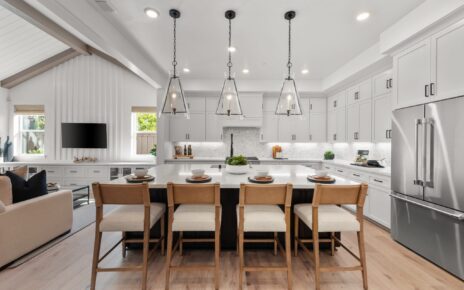Selecting durable furniture that endures both time and trends is a crucial aspect of home design. Investing in high-quality pieces not only ensures longevity but also enhances the aesthetic and functional appeal of your living spaces. This guide outlines essential factors to consider when choosing house furniture that will remain resilient and stylish for years to come.
1. Understanding the Importance of Material Quality
Wood
When it comes to durability, the material of your furniture is paramount. Solid wood, such as oak, maple, and walnut, is known for its strength and long-lasting nature. Unlike particleboard or medium-density fiberboard (MDF), which may deteriorate over time, solid wood furniture can withstand daily wear and tear. It also ages gracefully, often developing a rich patina that adds character to your home.
Metal
Metal furniture, particularly those made from stainless steel, wrought iron, or aluminum, offers excellent durability and a sleek, modern aesthetic. These materials resist corrosion and are less likely to warp or crack over time, making them ideal for both indoor and outdoor house furniture.
Upholstery
For upholstered pieces, consider fabrics like leather, microfiber, or high-quality synthetic blends. Leather is particularly durable and can last decades with proper care, while microfiber is resistant to stains and easy to clean. Ensure that the upholstery is tightly woven, as loose weaves are more prone to wear.
2. Examining Construction and Craftsmanship
Joinery
The way furniture is constructed plays a significant role in its durability. Look for pieces with strong joinery methods, such as dovetail joints or mortise-and-tenon joints, which provide superior strength compared to glued or stapled joints. High-quality house furniture often features solid, well-crafted joinery that can withstand the test of time.
Reinforcements
In addition to joinery, check for reinforcements like corner blocks or brackets that add stability to the structure. These are often found in well-made tables and chairs, where they prevent wobbling and ensure the piece remains sturdy over the years.
Finishes
A durable finish not only enhances the appearance of furniture but also protects it from damage. For wooden pieces, a high-quality finish such as lacquer or varnish can shield the wood from moisture, scratches, and UV rays, prolonging the life of the furniture. For metal, a powder-coated finish offers resistance to rust and corrosion.
3. Assessing Comfort and Functionality
Ergonomics
While durability is crucial, comfort should not be overlooked. Ergonomically designed furniture ensures that you maintain proper posture and reduce strain during use. This is particularly important for house furniture like chairs, sofas, and beds, which are used frequently. Choose pieces that offer adequate support and cushioning to promote long-term comfort.
Versatility
Versatile furniture that can adapt to different uses or spaces can also enhance its longevity. For example, a sturdy dining table that doubles as a workspace or an ottoman with hidden storage adds value and functionality to your home. Such multi-purpose pieces are often built to endure frequent use, making them a smart investment for durability.
4. Prioritizing Timeless Design Over Trends
Classic Styles
While trendy furniture may be appealing, it often lacks the staying power of classic designs. Opt for timeless styles that transcend fleeting trends and maintain their appeal over decades. Furniture with clean lines, neutral colors, and minimalist detailing tends to remain stylish and versatile, making it easier to incorporate into evolving interior designs.
Customization Options
Consider furniture that offers customization options, allowing you to update or modify pieces over time. For instance, a solid wood table with removable legs or an upholstered sofa with replaceable covers can be refreshed as styles change, without compromising the original structure.
5. Evaluating Maintenance and Care Requirements
Ease of Maintenance
Durable furniture should be easy to maintain, ensuring it stays in excellent condition with minimal effort. For example, choose materials that are resistant to stains, scratches, and other common forms of wear. Wood furniture can benefit from regular polishing and conditioning, while upholstered pieces should be vacuumed and spot-cleaned to preserve their appearance.
Professional Maintenance
Some high-quality furniture may require occasional professional maintenance, such as reupholstering or refinishing. While this may involve additional costs, it can significantly extend the life of your furniture, making it a worthwhile investment in the long run.
6. Making a Sustainable Choice
Environmentally Friendly Materials
Opt for furniture made from sustainable materials, such as FSC-certified wood or recycled metal, which not only ensures durability but also supports environmental conservation. Sustainable house furniture is often crafted with greater attention to quality and longevity, reducing the need for frequent replacements.
Ethical Manufacturing
Choose brands that prioritize ethical manufacturing practices, ensuring that your furniture is made with care and respect for both the environment and workers. This commitment to quality and sustainability often results in more durable and well-crafted products.
Conclusion
Choosing durable furniture that stands the test of time involves careful consideration of material quality, construction, design, and maintenance. By investing in well-made, timeless pieces, you can create a home environment that is both beautiful and resilient. Whether you’re furnishing a new space or updating your existing home, prioritizing durability in your house furniture will ensure that your investment pays off for years to come.





